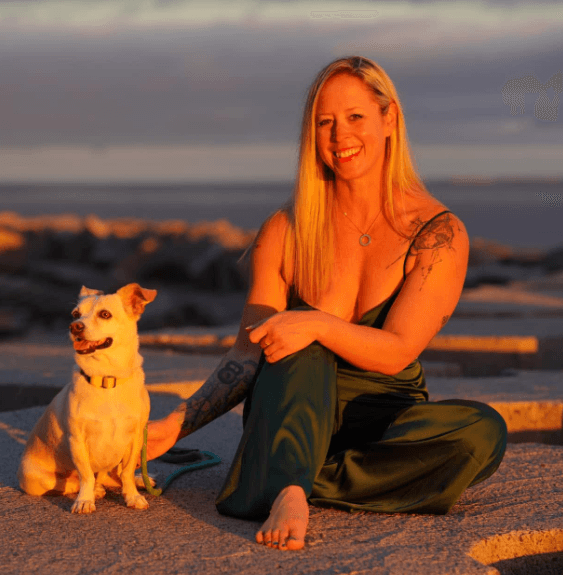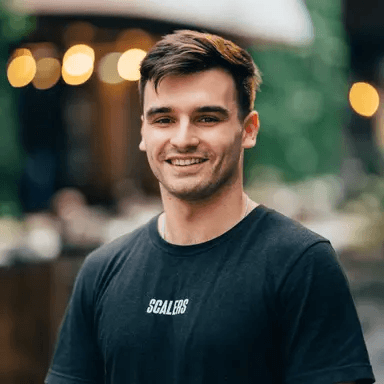How Will Williams Built a Six-Figure Website Flipping Operation from Teaching in Liverpool

Business Description
Table of Contents
Navigate through the case study sections
Executive Summary
Case Study Content
From the Classroom to Digital Markets: Will Williams’ Website Flipping Playbook
Will Williams didn’t start his journey in the world of online business with a master plan. For ten years, he taught in Liverpool schools, building lesson plans and managing classrooms. But by 2017, the itch for a side hustle had grown too strong, so he started small, running in-person group training for fellow teachers during evenings and holidays. This wasn’t a tech startup, just an extra income stream for a passionate educator.
Turning Content Into Cash
Will quickly realized that having a business means you need customers, and those customers needed a way to find him. He launched a simple website to promote his training, then started a blog, zero experience, just learn-as-you-go. Traffic started to pick up, and even though he didn’t fully understand SEO or digital marketing, the process felt rewarding, like untangling a puzzle each week. By 2018, he’d seen enough promise to make the leap: Will quit teaching and went full-time running his teacher training business.
For the next two years, Will crisscrossed the UK giving sessions. Demand for educational resources was rising, and his blog became more than just a marketing tool, it started drawing real audience numbers. He dove deeper, testing Google ads, dabbling on social, even writing simple SEO-driven posts. Then, fate struck. In early 2020, the world changed as Covid locked down live events, gutting his ability to run in-person courses overnight.
Pivot or Sink
Rather than panic, Will attributed his choppy revenue to seasonality, and experimented with alternatives. He recorded video training and sold it digitally, keeping the business alive. But traffic to the site remained the lifeline. He introduced Mediavine ads and steadily scaled affiliate links and product sales. Even with summer dips (schools closed, less traffic), site revenues averaged $6,000 per month.
First Big Exit: Selling for $160,000
Juggling multiple sites and ventures, Will faced a crossroads. His educational website had grown complex, and after 15 years in the education sector, burnout crept in. That’s when he decided to list the property on Motion Invest. It sold for $160,000 (roughly 30x monthly profits), a life-altering exit for someone who’d started with next to no digital experience.
The Flip Switch: Building a Repeatable Process
Long before selling the big site, Will ran an experiment, buying a small website to see if he could optimize revenue using tricks learned on his own business. This side project unlocked a new path: flipping websites. Over the next two years, he bought more sites, usually for under $20,000 apiece, never taking wild risks. By late 2023, Will had successfully flipped three websites (a teacher blog, a pet info site, and an outdoor niche property), with flips ranging from $4,500 to $82,000 in sales, all on Motion Invest.
Will’s Winning Strategy
Unlike most ‘get rich fast’ schemes, Will focused on acquisition targets with traffic, not empty shells. He prioritized:
- Sites with at least 30,000 pageviews per month
- Strong backlink profiles (outsource the SEO grind)
- Low-competition, evergreen niches (avoiding pets after one tough flip)
- Bonus: sites with email lists or diverse traffic sources
Rather than endlessly holding properties, he sells once the monetization work is done. Will says, “If I know I’m trying to sell, I get laser-focused and rebuild the business quick.” He’s not interested in riding every Google update rollercoaster. Flipping means profits come faster and exposure to risk is lower, especially as Google’s algorithm changes can wipe out long-term sites without warning.
The Secret Sauce: Monetization Upgrades
Will’s specialty is boosting ad revenue. Many small sites run Ezoic or Adsense because they’re locked out of high-paying Raptive or Mediavine networks (which demand 100k monthly pageviews). But, as an approved Raptive user, Will can sneak new sites in with as little as 30k monthly hits. This generates instant pay bumps (sometimes 2x-4x previous ad income) with a simple switch. He buys under-monetized traffic sites, unlocks higher ad rates, and profits both from improved recurring revenue and sale multiples.
He also leverages affiliate offers if relevant, rolls out digital products if he knows the niche, or teams up with sellers/experts to co-create products that the site’s audience craves. More recently, he’s explored email sponsorships, always seeking channels to lift income without dumping months into content churn.
Avoiding the Minefields
Not every flip is a win. Will’s pet site, bought and sold for only a small profit, was plagued by competition and SEO volatility. That forced him to hone a checklist: always verify existing traffic, demand good links, and stay out of niches dominated by giant publishers. He emphasizes direct deals through SEO communities for better prices, but will buy via platforms like Flippa if the numbers justify the risk.
Lifestyle Design and Long-Term Security
Will warns against planning too far out in the online space. Google updates, shifting niches, and new ad policies mean agility is king. “Now, I just try to stay profitable every year and funnel winnings into long-term investments outside the business.” Flipping lets you cash out often, avoid putting all your eggs in one algorithm’s basket, and pivot quickly when markets shift.
Today, besides actively managing a handful of acquired sites, Will has launched Flipperfy, an online hub where newcomers and seasoned website traders can learn every angle of the website flipping trade, from due diligence to content tweaks and fast exits.
Is Website Flipping for You?
For those tired of corporate ladders or constrained by geography or time zones, Will’s approach holds clear appeal. Buy a site already earning (even if small), amplify revenue with smart ad tactics and easy monetization tweaks, hold for a year or two, then sell for a tidy return. No need for complex tech, big teams, or huge upfront investment, just research, hustle, and a willingness to improve what already works.
His story proves you don’t have to invent the next unicorn. With drive, a willingness to learn, and a repeatable process, the world of website flipping is wide open to anyone with a laptop and the courage to start small, but think profit-first.
Key Takeaways
- 1Will Williams transitioned from full-time teaching to digital entrepreneurship using low-cost, low-risk strategies.
- 2He specializes in website flipping, buying under-monetized sites, boosting ad income via Raptive access, and reselling for strong returns.
- 3His biggest exit netted $160,000 on a site built from scratch, proving that content-focused businesses can achieve major results.
- 4Will avoids competitive niches and prioritizes properties with existing traffic and backlink strength over brand-new sites.
- 5He maximizes profits through superior ad network leverage, easy affiliate programs, digital products, and private deals.
- 6Will now shares his methods with others via Flipperfy, helping more people enter the site flipping space with practical and proven guidance.
Key Facts
Tools & Technologies Used
Premium Content Locked
Subscribe to access the tools and technologies used in this case study.
Unlock NowHow to Replicate This Success
Premium Content Locked
Subscribe to access the step-by-step replication guide for this case study.
Unlock NowInterested in Being Featured?
Share your success story with our community of entrepreneurs.
Explore More Case Studies
Discover other inspiring business success stories

How Nicole Spencer Scaled and Sold Her Online Coaching Business for $3M
Nicole Spencer left teaching and studio ownership to launch Authentic Conversion in 2018. She built a systemized, conten...
Authentic Conversion

How AYUR Bottle Sold for $38K in 21 Days: Building and Flipping a Wellness Brand Fast
AYUR Bottle transformed a handmade copper bottle concept into a sought-after e-commerce brand that generated balanced re...
AYUR Bottle

How Alex Micol Built a $10M+/Year Affiliate Marketing Empire
Alex Micol started at age 12 creating Facebook fan pages. By mastering audience growth, monetization, and ad buying, he ...
The Scalers